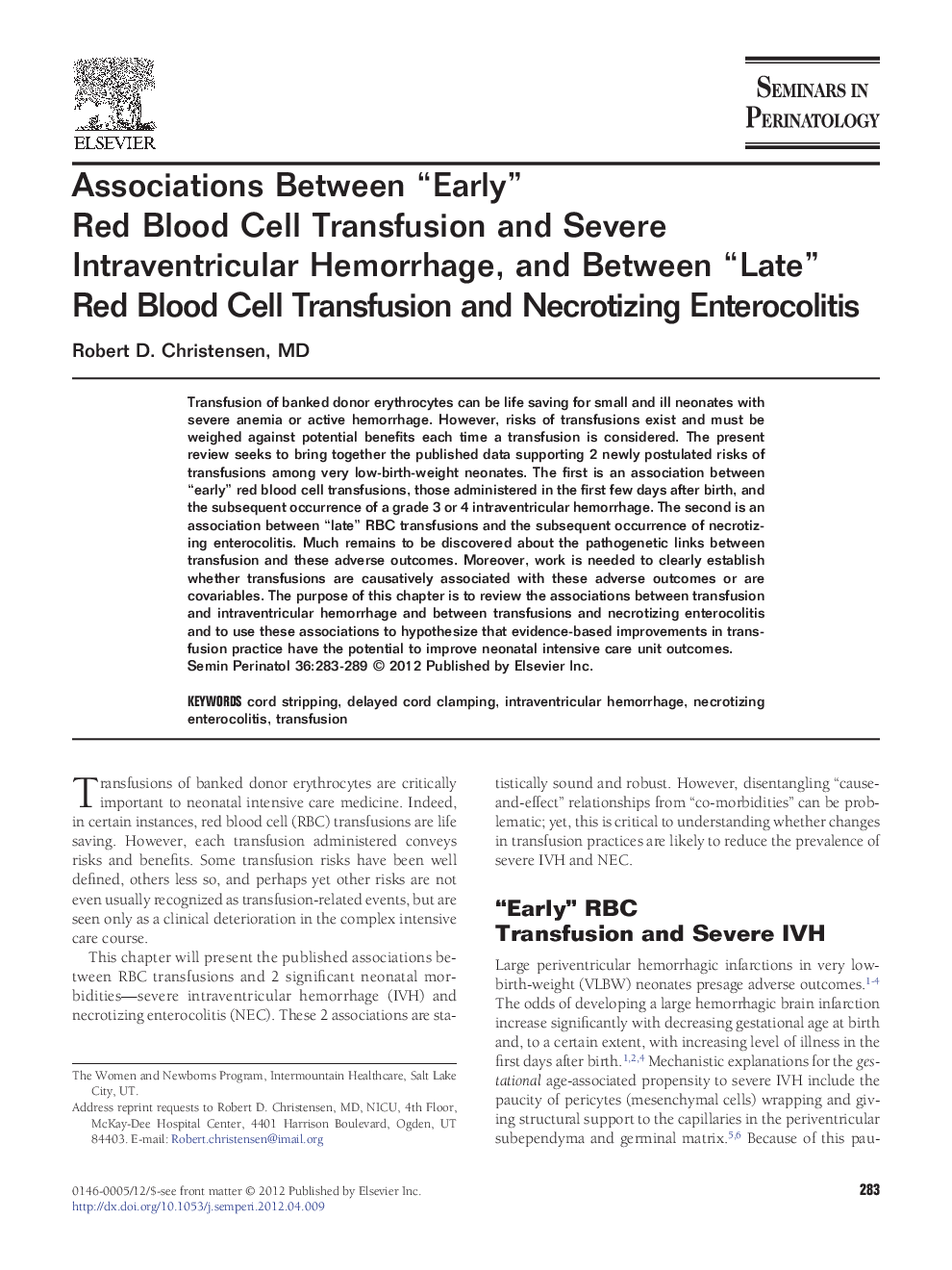| Article ID | Journal | Published Year | Pages | File Type |
|---|---|---|---|---|
| 3836466 | Seminars in Perinatology | 2012 | 7 Pages |
Transfusion of banked donor erythrocytes can be life saving for small and ill neonates with severe anemia or active hemorrhage. However, risks of transfusions exist and must be weighed against potential benefits each time a transfusion is considered. The present review seeks to bring together the published data supporting 2 newly postulated risks of transfusions among very low-birth-weight neonates. The first is an association between “early” red blood cell transfusions, those administered in the first few days after birth, and the subsequent occurrence of a grade 3 or 4 intraventricular hemorrhage. The second is an association between “late” RBC transfusions and the subsequent occurrence of necrotizing enterocolitis. Much remains to be discovered about the pathogenetic links between transfusion and these adverse outcomes. Moreover, work is needed to clearly establish whether transfusions are causatively associated with these adverse outcomes or are covariables. The purpose of this chapter is to review the associations between transfusion and intraventricular hemorrhage and between transfusions and necrotizing enterocolitis and to use these associations to hypothesize that evidence-based improvements in transfusion practice have the potential to improve neonatal intensive care unit outcomes.
